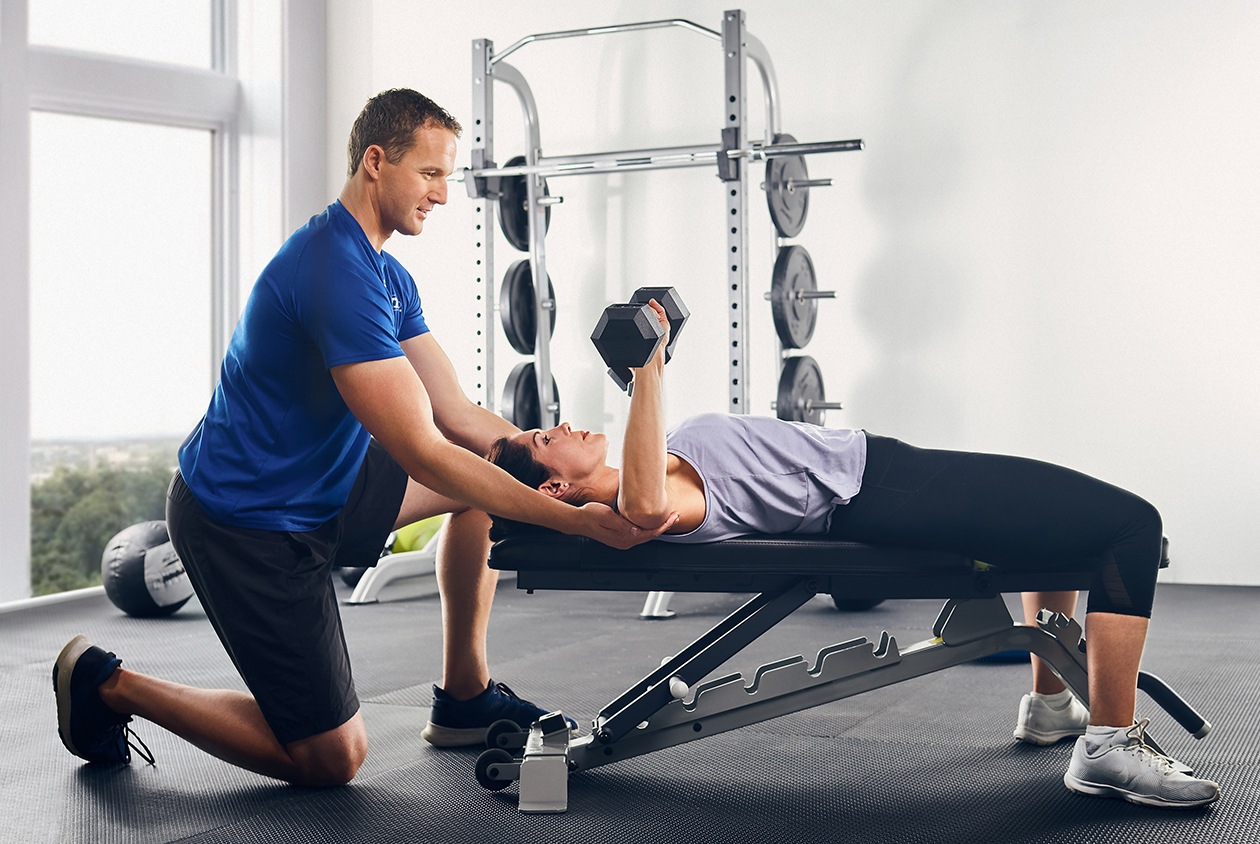Losing weight at the gym is possible, but it can be difficult. Your success will depend on how much energy you invest in your weight loss program. You should be motivated and encouraged, and be prepared to put in a lot of effort to lose weight. You can lose weight at the gym by doing strength training and aerobics, as these burn more calories than cardio.
Strength training burns more calories than cardio
A strength training session burns more calories than a cardio workout, and the benefits don’t end at the gym. In fact, studies show that strength training increases resting metabolism, which means that it can help you burn more calories, even when you’re at rest.
Cardio is an effective method of losing weight at the gym, but it does not burn enough calories to build muscle. You’ll lose weight, but only on the scale. By contrast, strength training is more effective at sculpting a body. Using weights allows you to gain lean muscle tissue, which burns more calories than fat.
To get the maximum benefit from strength training, try to do it for an hour three to five times a week. Strength training should not be performed every day, but you should rest a day between each session. For example, if you do weights on Monday and Tuesday, you should take a day off on Wednesday.
Strength training also helps you lose weight. By building more muscle, you’ll be able to lose more fat and keep it off. Muscle burns more calories at rest than fat, so the more muscle you have, the more calories you’ll burn. Strength training has also been shown to increase resting metabolic rate. One study found that, when compared to cardio, weight training increased resting metabolic rate by 9% in men and 4% for women.
HIIT
HIIT is an exercise routine wherein you work out with short bursts of high intensity followed by periods of rest. The work to rest ratio is generally 1:1:2, depending on the intensity of the exercise. The goal of HIIT for weight loss is to burn as many calories as possible during the hard intervals.
HIIT workouts can be done on various gym machines. They are generally 30-45 minutes long and can be broken up throughout the day. For beginners, it is recommended to do shorter workouts at different times throughout the week. A mix of running and walking can be a good starting point.
HIIT can lead to overtraining if you use it too often. HIIT workouts can exhaust the body so it is important to recover well. It is not recommended to use HIIT more than twice a week. Otherwise, you may find yourself overworking and not getting the results you’re after. It is important to know when to use HIIT so you do not damage your body or limit your results.
HIIT is an effective weight loss method. It burns tons of calories in a short time and is time-efficient. In fact, one HIIT session can burn as much calories as 30 to 60 minutes of normal walking. However, it is important to remember that HIIT cannot substitute for a healthy diet and other lifestyle habits.
Bodyweight exercises
Bodyweight exercises can help you tone your muscles, burn calories, and build strength. They don’t require any gym equipment and are great for people on the go. This way, you can workout anywhere. This is also a great option for people who don’t have access to commercial gyms.
One of the most effective ways to burn calories at the gym is through bodyweight exercises. These exercises will burn fat while building muscle and developing flexibility. These workouts will also rev up your heart rate and require no equipment, which makes them the perfect solution for anyone. Best of all, they can be done anywhere and at any time.
In addition to burning fat, bodyweight exercises will help you improve your cardiovascular health. You can begin with simple exercises and gradually increase the difficulty of your workout as your strength improves. For best results, you should aim to increase the weight you use with each set. This is called progressive overload.
One of the most effective bodyweight exercises is the push-up. This exercise is perfect for toning the muscles and strengthening the upper body. It can also be modified to target different muscle groups. For best results, perform the exercise with your legs extended and your core engaged.
Rest period between sets
Whether you’re trying to lose weight or build muscle, it’s important to know how long to rest between sets at the gym. A longer rest period allows you to recover more effectively from the exertion of the previous set. In addition, it reduces fatigue and metabolite accumulation, which are both detrimental to muscle growth.
The body uses three energy systems to fuel its various activities. Each system contributes a different amount of energy, depending on the intensity and duration of the activity. In general, the phosphagen system contributes the most energy during strength activities. It produces adenosine triphosphate, which powers short-duration muscular activity.
The rest period between sets in the gym is an important variable in resistance training. It can be tweaked to complement changes in rep count and intensity. However, too little rest between sets may cause submaximal muscle growth, while too much rest may take you out of your comfort zone and squander your workout time. As a result, the ideal rest period between sets is different for every person and strength workout.
The rest period between sets at the gym will affect how much fat you burn during your workout. You should aim to rest for no more than two minutes between sets. This will help you maximize the training density and benefit from high-intensity interval training. You can also use this time to listen to your body. Recovery is essential for seeing results.
Getting enough sleep after a workout
Getting enough sleep after a workout is important to recovery. According to a study by the National Sleep Foundation, moderate to vigorous exercise can improve sleep quality. This is because your muscles and body will have time to reset and recover. Ideally, you should sleep for seven hours after a workout.
Sleeping well is essential to your fitness progress. Sleep also helps the body repair damaged muscle fibers. During sleep, your body releases hormones that aid in muscle repair, including growth hormone. Growth hormone is released at its highest levels while you are asleep. Most adults require seven to nine hours of sleep per night.
Sleep affects every bodily function, including the immune system. If you do not get enough sleep, you will feel fatigued and lack motivation to exercise. In fact, one study found that people who did not get enough sleep were less likely to complete an exercise session than those who had a good night’s sleep.
If you can’t swing an early morning workout, try scheduling your workout at a consistent time of night. Your body is constantly looking for patterns, so a consistent schedule helps. Moreover, if you workout late at night on a daily basis, you may snooze better than when you do it just once or twice a week.

